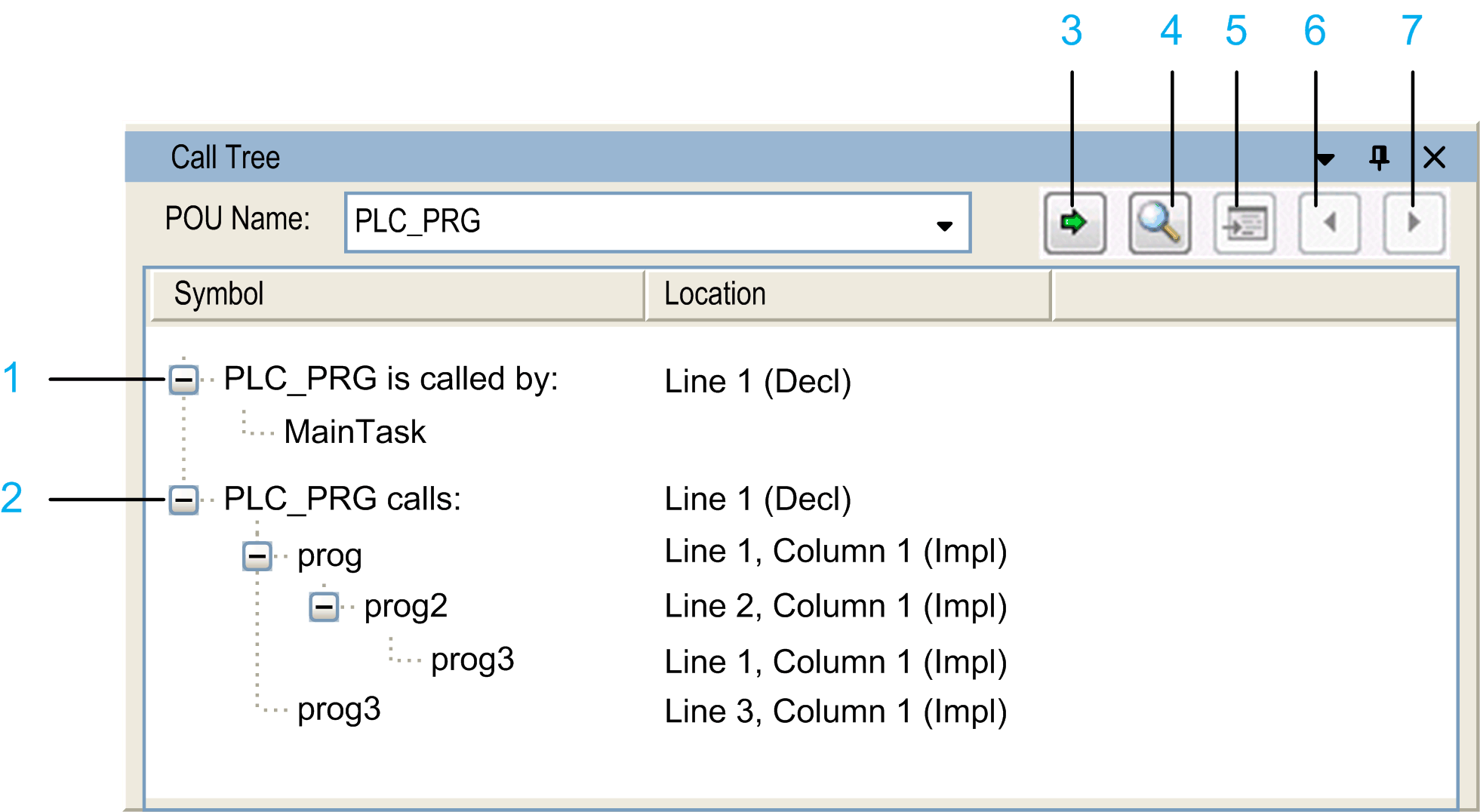Overview
The command opens the view.
The figure provides an example of a call tree for the POU PLC_PRG:

1 Root node for the elements that are called by the POU PLC_PRG
2 Root node for the elements that call the POU PLC_PRG
3 Find POU button
4 Pick POU from input assistant button
5 Show source position of selected POU button
6 Show source position of next POU button
7 Show source position of previous POU button
The call tree is available even before compiling the application. It is a static representation of the POUs calling and those called by the POU specified in the box. It consists of two root nodes, each containing the respective call order as indented nodes. The tree structure allows you to detect recursive calls.
The view contains the following elements:
|
Element |
Description |
|---|---|
|
toolbar |
|
|
|
Name of the POU. You can enter the name manually, or drag the name from another view or click the button. The list contains the POU names that you already specified. |
|
button |
Click the button to find the POU you entered in the box. |
|
button |
Click the button to open the dialog box that lists the POUs available in the project. Select a POU and click to update the call tree for the selected POU. |
|
button |
Click the button to jump to the position in the source code of the program where the POU occurs. |
|
button key |
Click the button or hit the key of the keyboard to jump to the next occurrence of the POU in the call structure. The associated source code position opens in the respective editor. |
|
button + key |
Click the button or hit the + keys of the keyboard to jump to the previous occurrence of the POU in the call structure. The associated source code position opens in the respective editor. |
|
table |
|
|
column |
The call order is displayed below this node. The bottom entry in this tree structure shows the start of the calls.
The elements called by this POU are displayed below this node. The bottom entry in this tree structure shows the end of the call chain. |
|
column |
For the root node: This value indicates the line numbers of the declaration () of the POU. For the POUs calling and those called below the root node: This value indicates the line number, column number, and network number of the position, depending on the implementation language. |
|
Contextual menu for the entry selected in the table |
|
|
command |
The entries in the call tree are collapsed, except for the two root nodes. |
|
command |
Jump to the position in the source code of the program where the POU occurs. |
|
command |
The entry selected in the call tree is converted into the root node and displayed as . The tree is refreshed automatically for the new root nodes. |
In contrast to this static that provides call information about a POU, the view provides immediate information when stepping through a program. The shows the full call path of the current position that is reached.